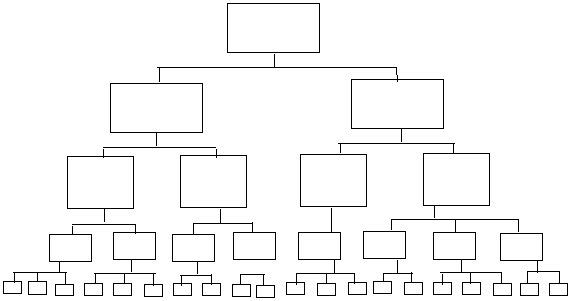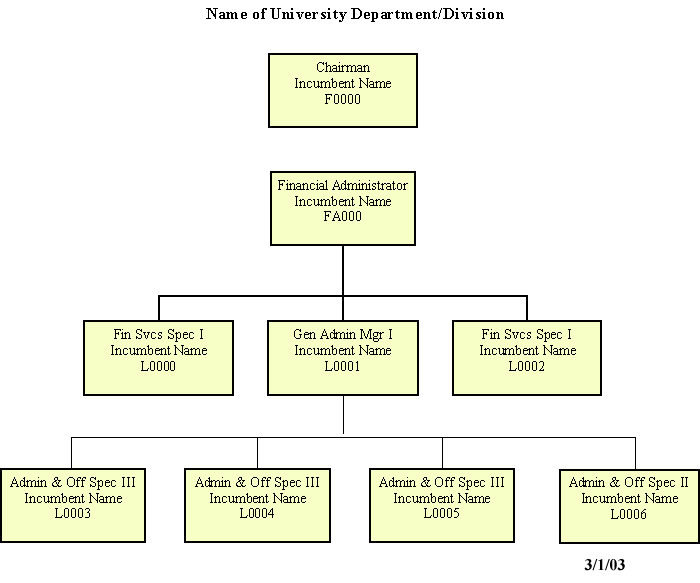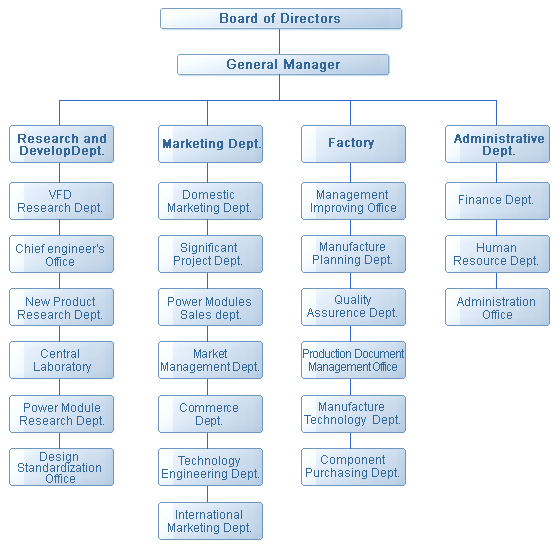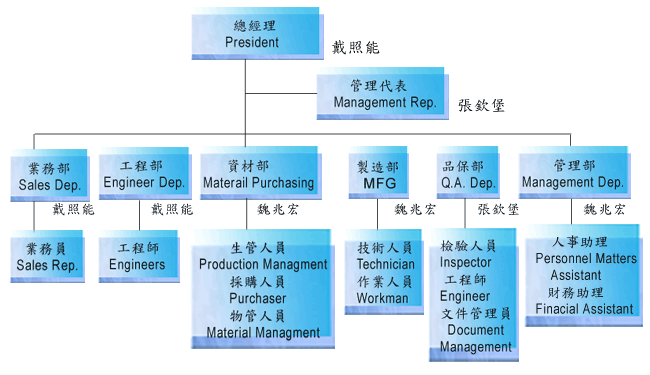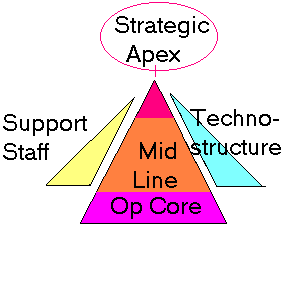Internal
Links
Top
|
|
Outline on Social
Structure
|
|
External
Links
|
| |
- Video: Society, Culture,
& Social Structure 2:25 |
Link
|
| |
- What is society? Society is made up of social structure
& culture |
|
| |
SUMMARY: Social Structures have the following characteristics:
A. Social grps or orgs
B. Positions
1) Role
a.
Role
set
b.
Role
strain
c.
Role
conflict
d.
Role
exit |
2. Bases of a position
a.
Class
b.
Status
i.
Ascribed
status
ii.
Achieved
status
iii.
Master
status
c.
Power |
C. Regular relationships
1) Division of labor
2) Stratification
D. Constant share of resources
E. Historical development |
|
|
| |
A SOCIAL STRUCTURE IS THE ORGANIZATION OF SOCIETY, OUR PATTERNS
OF BEHAVIOR AS SEEN IN FAMILY STRUCTURE, EDUCATION, ETC. |
|
|
|
Social structure is the organization of society, including institutions,
social positions, the relationships among social positions, the groups
or orgs that make up society, & the distribution of scarce resources
w/in the society |
|
| |
Social structure is the patterned & relatively stable arrangement
of roles & statuses found w/in societies & social institutions |
|
| |
The idea of social structure points out the way in which societies,
& institutions w/in them, exhibit predictable patterns of organization,
activity & social interaction |
|
| |
This relative stability of org & behavior provides the predictability
that people rely on in every day social interaction |
|
| |
Social structures are inseparable from cultural norms & values
that also shape status & social interaction |
|
|
|
Social structure is the organization of society, including
- groups of organizations that
- perform basic functions of society
- support society's culture
- accepted as an essential element in society, that is, are taken for
granted |
|
| |
Social structure is the relatively stable patterns of social behavior |
|
| |
In the sense that structure is not visible, it is a reified, abstract
concept |
|
| |
TODAY THE SOCIAL STRUCTURES INCLUDE PF REG M CEML |
|
|
|
List of Social Structures ( PF REG M CEML
)
1. Peers
2. Family
3. Religion
4. Econ / work
5. Govt |
6. Military
7. Charity
8. Education
9. Media
10. Leisure / Recreation |
|
|
| |
COMPONENTS OF SOCIAL STRUCTURES |
|
|
|
Social structures have FIVE components or qualities including being
composed of groups, in particular positions, w/ regular relationships to
each other, a constant share of resources, & a particular historical
development |
|
| |
A. SOCIAL GROUPS OR ORGANIZATIONS |
|
|
Link
|
The first component of a social structure is that is is made up of
social
groups or organizations
- two or more people
- who share a common purpose
- have a structure of roles & statutes |
|
| |
Each of the social structures, PF REG M CEML, is composed of orgs,
& orgs w/in each of the social structures has similar structures that
are unique to that social structure |
|
| |
Families have structures made up of the relations btwn different members
of the family held together by various familial bonds |
|
| |
While different families have some different features of their structures,
all families have some structural features in common including parents,
guardians, leaders; & children, young adults, dependents; extended
members, aunts, uncles, etc. who live together by the bond of procreation
or some other intimate bond |
|
| |
Economic orgs, i.e. businesses have structures made up of the relations
btwn different members of the business held together by various economic
bonds |
|
| |
While businesses have some different features of their structures,
all businesses have some structural features in common including owners,
mgrs, partners; & workers, employees who are together by the bond of
creation, labor, employment |
|
| |
See Also: Economic Orgs Structure |
|
| |
More of the TEN social structures are examined below |
|
| |
B. POSITIONS |
|
| blank |
The second component of a social structure is that it is made
up of persistent positions are roles, classes, status's, & power
which persist over history |
|
|
Link
|
1) A ROLE is any position in a social structure
or the expected behavior in a social position |
|
| |
a. A role set is a collection of related roles
attached to one social position or status; sets of expected behavior |
|
| |
b. Role conflict is conflicting or opposing expectations
or behaviors among various roles |
|
| |
Role conflict can be reduced by "compartmentalizing" our lives |
|
| |
c. Role strain is conflicting or opposing expectations
or behaviors w/in same role |
|
| |
d. Role exit is the process by which people disengage
from important social roles |
|
| |
2) The three BASES OF POSITION are class, status,
& power |
|
| |
There is disagreement about which interpretation of position
is most important |
|
| |
a. Class is an actor's position ( upper, middle, lower
) in relationship to the economy / their income |
|
| |
Listings of classes typically include the upper, middle, & lower
classes, but also may be stratified into finer distinctions |
|
| |
The most common system of classes today includes the upper, upper middle
middle, working, & lower classes |
|
|
Link
|
b. Status is an actor's level of prestige or honor |
|
| |
Status is a social position that an individual occupies |
|
|
|
There are THREE types of status: ascribed, achieved, & master |
|
|
|
i. Ascribed status is the status an actor is born into |
|
|
|
A person generally receives ascribed status through birth, including
race, sex, family of origin, etc. |
|
| |
An ascribed status is a social position that someone receives at birth
or involuntarily assumes later in life |
|
| |
ii. Achieved status is the status an actor earns or creates;
i.e. achieved status is at least partially a result of something that the
actor does |
|
|
|
An achieved status is a social position that someone assumes
voluntarily & that reflects personal ability & effort |
|
|
|
iii. Master status is an actor's most important status;
i.e. the status that is most central & important in an actor's life |
|
| |
A master status is a status that has special importance for social
identity, often shaping a personís entire life |
|
|
|
An actor may be able to choose their achieved status, but ascribed
& master status' are attributed by society through social structures |
|
|
|
Marx said, 'A person may make history, but they make history under
conditions not of their own choosing.' |
|
|
|
For most people in modern industrial countries, their master status
is their occupation |
|
| |
A status set consists of all the statuses a person holds at a given
time |
|
|
|
c. Power is the authority or the ability to get people
to act |
|
| |
C. REGULAR RELATIONSHIPS |
|
|
|
The third component of a social structure is that there are constant
or regular relationships
among groups & social structures: |
|
| |
TWO common types of regular relationships in social structures include
a division of labor & stratification |
|
| |
1) The division of labor is the constant allocation
of type of labor; a system of specialization |
|
| |
2) Stratification is the constant allocation
of resources; a system of inequality |
|
| |
D. CONSTANT SHARE OF RESOURCES |
|
|
Link
|
The fourth component of a social structure is that each social structures,
historically, receives a constant share of resources
Which are the 3 richest social structures?
Which are the 3 poorest social structures? |
|
| |
E. HISTORICAL DEVELOPMENT |
|
|
Link
|
The fifth component of a social structure is that social structures
each have a unique historical development |
|
| |
See Also: The Organizations that Compose the Social Structures |
|
| |
See Also: Organizational Structure |
|
| |
EXAMPLES OF THE SOCIAL STRUCTURES
( PF REG M CEML ) |
|
|
Link
|
1. Peers |
|
| |
a. Groups: |
|
| |
b. Positions |
|
| |
c. Relationships |
|
| |
d. Resources |
|
| |
e. Historical development |
|
|
Link
|
2. Family |
|
|
Link
|
3. Religion |
|
|
Link
|
4. Economy / work |
|
|
Link
|
5. Government |
|
|
Link
|
6. Military |
|
|
Link
|
7. Charity |
|
|
Link
|
8. Education |
|
|
Link
|
9. Media |
|
|
Link
|
10. Leisure / Recreation |
|
A. Social
Groups:
In the case of social institutions, MANY people
are required
Example: Students are a group in the social structure of education
Blue collar workers, mgrs., up mgt.,
stock holders, etc. in the the social structure of education
|
1) Role
EXAMPLES
a. Role Set: student,
mother/father, teacher
b. Role Conflict: sales & family
life
c. Role Strain: sales job conflict among management,
customers, co-workers
|
b. Social Position
based on Status
Status: ( level of prestige/honor ): any position
in SS: see table in book
i. Ascribed Status: gender, race, religion, family,
looks, size,
ii. Achieved Status: earn, at least partially as result
of own action: most imp: occupation, education, income, Motherhood
iii. Master Status: Had been different for men & women:
occupation & Motherhood, looks
|
D. Relatively
historically constant % of resources is allocated to each social
structure
Which are the 3 richest SS's?
Which are the 3 poorest SS's?
Richest
Poorest
Econ / work
Family
Military
Peers
Govt
Education
|
E. Each Social
Structure has a unique historical development
The SS List presents each SS in its approximately order of historical
emergence
1. Peers
2. Family
3. Religion
Are believed to be prehistorical, the emergence
of which made civilization itself possible
4. Work / econ
5. Government
6. Military
7. Charity
Are believed to emerge when the 1st glimmers of
civilization began
8. Education
9. Media
Emerged early in history, but were only for the
elites until the modern era when they became widely available
10. Leisure / recreation
Is a product of the late stages
industrial revolution
|
| Top |
|
See Also: The Organizations that Compose Social Structures |
|
1. Peers
SS Examples
Often combined/formed around recreation / leisure
Groups: (Orgs): Most peer groups today are
informal
orgs:
friends or any group primarily composed of friends:
frats, sororities, bowling club, bridge club; cliques:
Jocks, brains, grunges, preps, skanks, gangs use
specific
names, e.g. the CMT, etc.
Positions: various functional leaders: most friendship
groups have some informal leader; also: clown, goat, etc.
Relationships: division of labor based on position; may
divide labor depending on task at hand
Allocation of Resources: random strat w/in groups;
but preps more likely to be UC; jocks less likely, etc.
History: It is believed that prior to our development
into homo sapiens, that we developed close relationships
It may be this social tie that distinguishes us from other primates,
though many other primates do have peer relations
So how are ours different?
Coop to hunt
Breeding males stay in same tribe
|
| Top |
|
See Also: The Organizations that Compose Social Structures |
|
2. Family
SS Examples
Groups: (Orgs): Most family groups today are informal
orgs: Smiths, Jones, etc.
Traditional, Non-traditional family, Single Mom, Single Dad, Step,
Extended...
The family is legally recognized
Positions are legally recognized
Positions: Mom, Dad, kids, Head of Household, Step-, Grandma,
....
Relationships: Mom to daughter, Dad to daughter, Mom to
Dad, Step Dad to Step Kid,
Traditional family to Traditional family; Single Mom family to Extended
family ....
Allocation of Resources: society is structured so that
Non-traditional family (working Mom & Dad) receives most
resources; the least?
History: The History of family is very complex
H-G society: matrilineal, serial monogamy
Ancient: Serial monogamy & polygamy
Industrial: Monogamy
Today: Monogamy & serial monogamy
|
| Top |
|
See Also: The Organizations that Compose Social Structures |
|
3. Religion
SS Examples
Groups: (Orgs): Most religious groups today are
formal
organizations
Positions: Religious leader: priest, cleric, rabbi,
monk etc. Religious follower:
Relationships: varied depending on religion: e.g.
Catholic is more hierarchical;
Allocation of Resources: religion estb wealth over time
& based on conversions: older religions more wealthy
History: Paganism, Polytheism, Monotheism, Secularism
|
| Top |
|
See Also: The Organizations that Compose Social Structures |
|
4. Work
(the Economy) SS Examples
Groups: (Orgs): Most econ groups today are formal
orgs: businesses (corporations, partnerships, entrepreneur)
unions, professional orgs, worker associations;
most workers belong only to informal peer/
class groups
Positions: Owner, mgr., admin, worker, tech,
etc.
Relationships: most very authoritarian/ hierarchical:
higher position gives orders to lower position;
obedience required w/in workplace bounds
Allocation of Resources: Great strat: owners, mgrs.
etc.
control wealth of society
History:
H-G society: Work not recognized as separate activity
Only worked to survive; no wk, no survival
Ancient: Separate process of wk recognized
because ruling class emerges, who do not wk
Industrialized society: Amount of wk in society increases, becomes
rationalized
Wk is removed from the home
|
| Top |
|
See Also: The Organizations that Compose Social Structures |
|
5. Govt
SS Examples
Groups: (Orgs): Most govt groups today are formal
orgs
Positions: Elected officials, bur, citizens, non citizens
Relationships: wide range of variation: democracy
to totalitarian
Allocation of Resources: US govt controls 1/4 to 1/2 GDP
History:
H-G society: Govt & peers (tribe) & religion & family
all intertwined
Ruled by consent & status
Ancient: Govt & religion & family still intertwined,
but becomes more removed from the governed
Ruled by violence & authoritarianism
Industrial: Some vestiges of democracy develop
|
| Top |
|
See Also: The Organizations that Compose Social Structures |
|
6. Military
SS Examples
Groups: (Orgs): Most mil groups today are formal
orgs
Positions: leaders, soldiers
Relationships: same hierarchy as econ (econ based on mil
model) except that obedience is total
Allocation of Resources: Lower strat than in econ
History:
H-G society: Hunters were also warriors
Little war except to steal wives
Ancient: Soldiering becomes an occupation
Div of labor separates out separate class of warriors
Becomes linked w/ govt
Industrial: Separate of mil from govt
|
| Top |
|
See Also: The Organizations that Compose Social Structures |
|
7. Charity
SS Examples
Groups: (Orgs): Most char groups that raise large
amounts of $$ today are formal orgs,
but many informal groups
also exist: Want to contribute to the JJ Kelly
Cross Country Team Travel Fund?
Positions: formal orgs have typical. mgr/wkr pos;
volunteers
Relationships: formal orgs have typical. mgr/wkr
relations;
volunteers maintain relations based on commitment
to goals
Allocation of Resources: formal orgs raise billions;
small orgs raise small amounts for local groups
History:
H-G society: if you worked, you shared & received all goods
Ancient: religion dictates alms for the poor
Industrial: Charity is business; separated from religion; taken
on by govt
|
| Top |
|
See Also: The Organizations that Compose Social Structures |
|
8. Education
SS Examples
Groups: (Orgs): Most ed groups today are formal
orgs: Elementary, middle, high, Community College,
College, Grad
Positions: teachers & students
Relationships: similar to econ: voluntary after
hi school
Allocation of Resources: Teachers more than students;
less $$ than govt, wk, mil
History:
H-G society: Learn from tribal peers: man to man; woman
to woman
Ancient: Formal ed develops for elites
Industrial: Formal ed expands to other classes in the 1800's
|
| Top |
|
See Also: The Organizations that Compose Social Structures |
|
9. Media
SS Examples
Groups: (Orgs): Most media groups today are formal
orgs
Positions: Mgrs., admin, reporters
Relationships: similar to econ model
Allocation of Resources: typical
History:
H-G society: gossip
Ancient: Elites receive news orally by messenger
Writing develops; elites receive some written communication
Industrial: Use of printing press expands; Communication
avail to all classes
|
| Top |
|
See Also: The Organizations that Compose Social Structures |
|
|
|
See Also: The Social Structure of Rec & Leisure |
|
10. Recreation
/ Leisure SS Examples
Groups: (Orgs): Most recreation groups (friends,
bridge clubs, etc.)
today are informal
orgs that purchase recreation services from formal
orgs
Positions: same as friends in informal orgs; same as econ
in formal orgs
Relationships: same as friends & econ
Allocation of Resources: more $$ spent every day on recreation
History:
H-G society: as w/ work, separate spheres of wk & leisure
not recognized
Ancient: leisure seen as time of rest & societal rituals
Industrial: Leisure develops as industry; people seek fulfillment
through leisure
|
|

